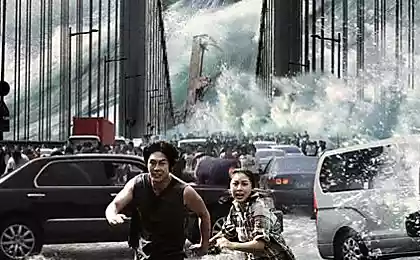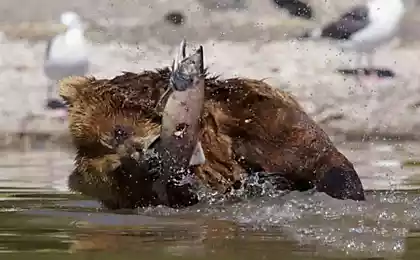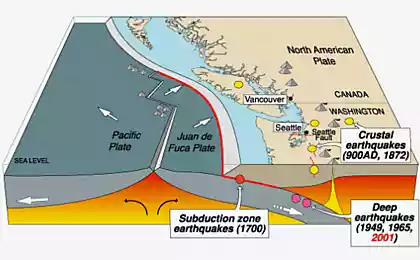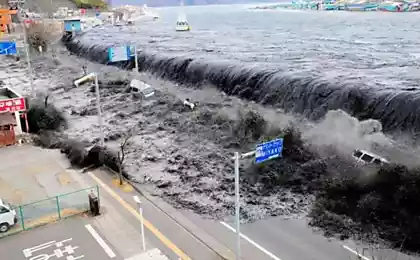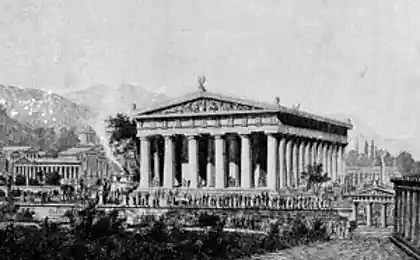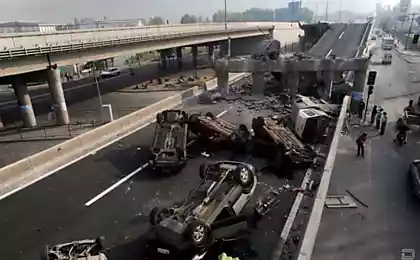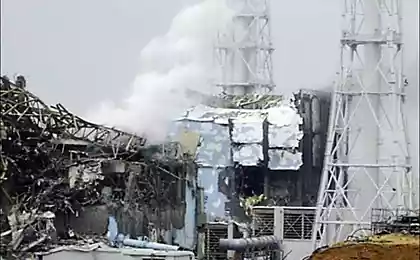672
10 facts about tsunamis

1. The word "tsunami" comes from the Japanese language. It means "wave in the bay." Before the tsunami called "waves ebb and flow", but now the term is not used as the tsunami have nothing to do with the tides.
2. A tsunami consists of a series of surface waves, following one another, instead of a single wavelength. During a large tsunami waves can come ashore for a few hours, and the first wave is not necessarily the most destructive.
3. In most cases, a tsunami occurs because of underwater tremors and earthquakes. According to the US Geological Survey, a catastrophe similar to the one that occurred in Samoa, causing the earth's crust underwater tremor force eight points. The earthquake will produce a tsunami if it is powerful enough and make enough to move a large mass of water.
4. Approximately 80% of tsunamis occur in the Pacific Ocean.
5. The hypothesis that the cause of the tsunami is shaking the seabed for the first time expressed the Greek historian Thucydides in 426 BC in his book "History of the Peloponnesian War».
6. Volcanic eruptions, massive avalanches, falling meteorites and underwater nuclear explosions can also cause tsunamis. Other causes are tropical cyclones or weather conditions. The tsunami caused by the storm, called "meteotsunami." This tsunami struck Myanmar (Burma) in 2008.
7. In spite of the enormous height of the waves rolling on the shore, the height of the tsunami wave in the open ocean, often less than one meter, whereas the wavelength (the distance between two crests) can reach 190 km. The wave speed is more than 800 km / h - is the speed of a jet plane.
8. When the tsunami reaches shallow water, the waves are compressed, the wavelength decreases and height increases. Wave loses speed, but it still takes about 80 km / h.
9. to predict tsunamis is almost impossible. In some cases, you can give a warning a few minutes, when suddenly coming off the water at the shore. This happens when the "sole" of the wave reaches land before the crest.
10. 10-year-old British girl Tilly Smith saved the lives of nearly a hundred during the Indian Ocean tsunami in 2004. At the geography lesson she had heard that when the tsunami water instantly moves away from the coast, and warned parents, who in turn told it to the neighbors. Then she spoke to the United Nations, and it is named after the asteroid "20002 Tillismit».
And another:
The length of the tsunami waves - tens and hundreds of kilometers; In the open ocean, a tsunami has a height less than a meter; From the tsunami water moves back and forth across the thickness ocean, down to the bottom; During the movement of the waves to the shore of its speed to a depth of 4 km of 200 m / s; In shallow water, the rate drops sharply: at a depth of 10 m speed is only 10 m / s; When you exit the shallow water the wave height increases; The smaller the pond, the stronger this effect (depth decreases, and the height of the wave increases). Therefore, reaching the shore top waves not only rises, but also seeks to topple forward. www.kabanik.ru
via factroom.ru
The supercomputer Watson is able to respond to unexpected questions
The most expensive toy in the world - is Hello Kitty worth $ 167,000




